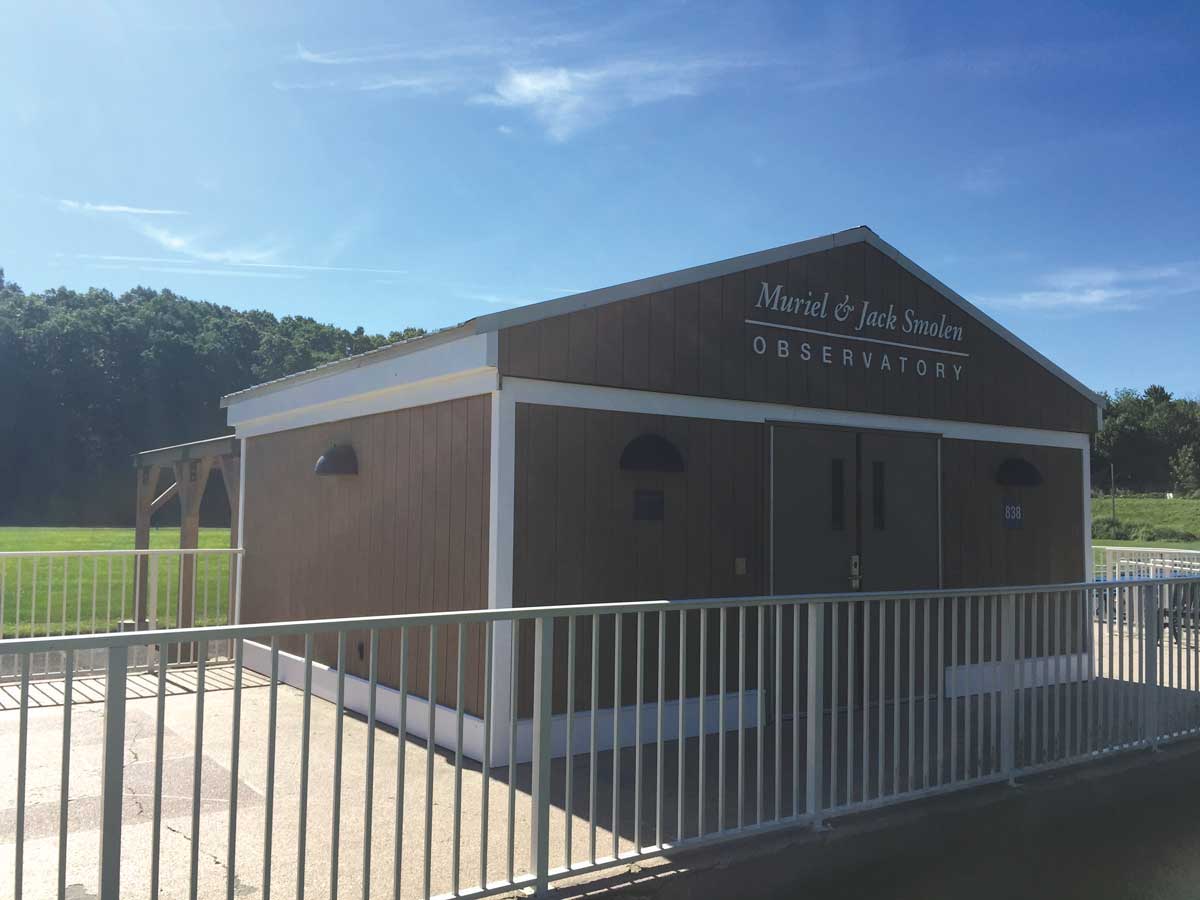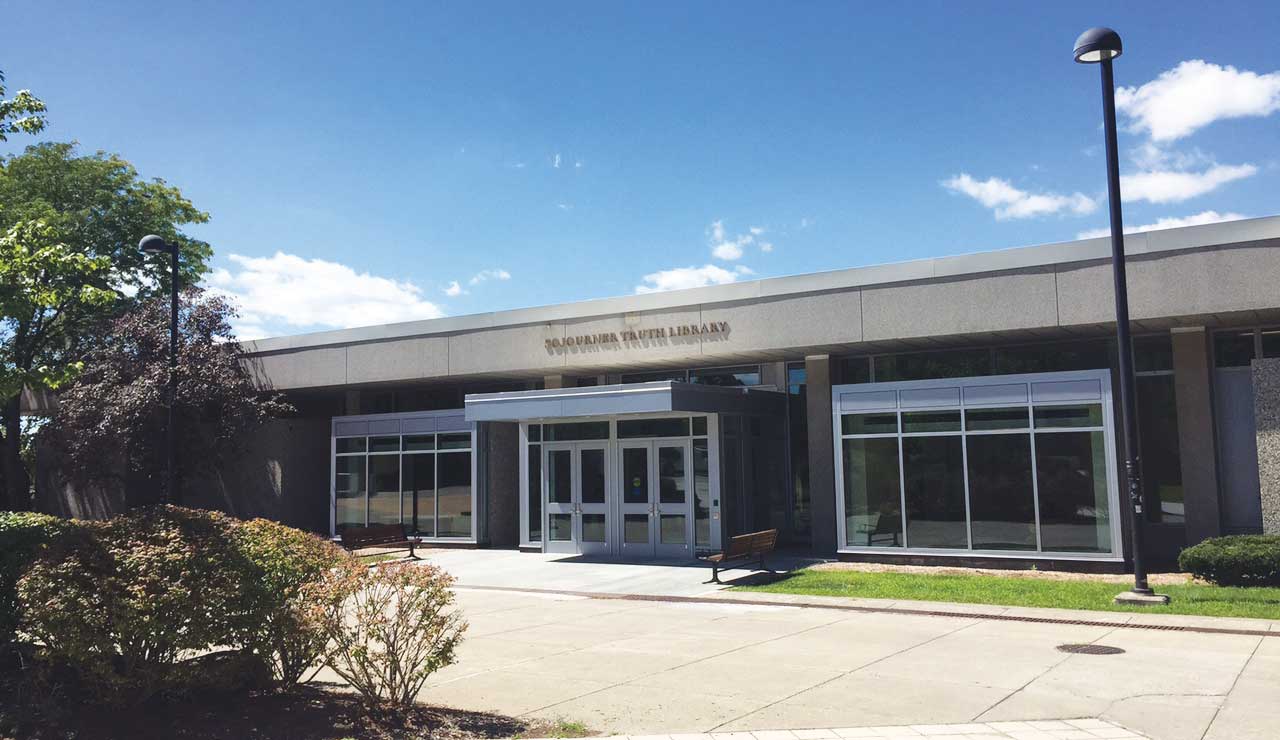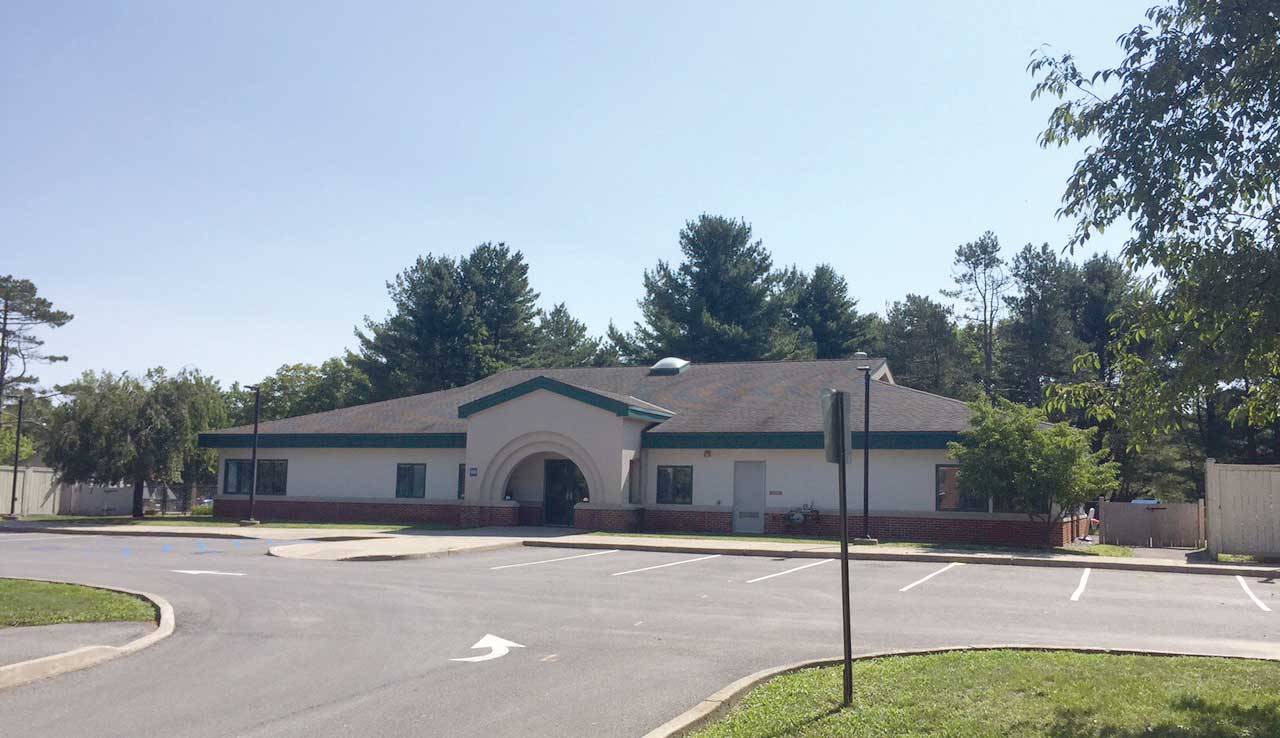SUNY New Paltz owes much to the rich history and traditions of the Mid-Hudson Valley region. Many buildings on campus were named in remembrance of the peoples, families and individuals who helped make this institution, and the Village in which it stands, the strong and vibrant community we know today.
Use the menu on this page to read more about the histories and namesakes of the residence halls, academic buildings and athletic and recreational facilities on the SUNY New Paltz campus.
Academic & Administrative Buildings
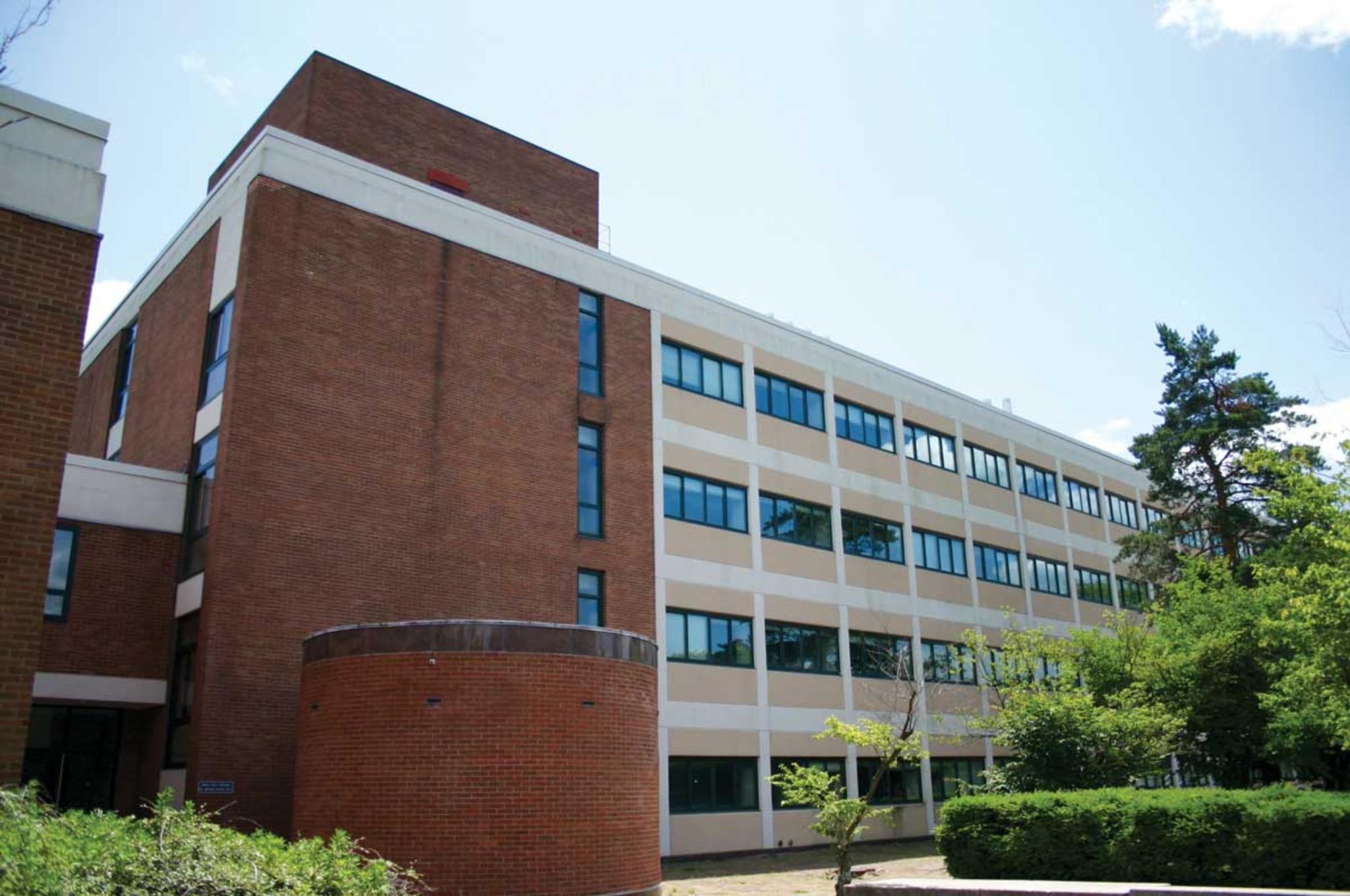
Constructed in 1964 and renovated in 1997, the CSB is home to the classrooms and laboratory spaces used by biology and chemistry students and faculty. It also houses the Department of Digital Media & Journalism and the John R. Kirk Planetarium. The building was named for Edward Coykendall, an esteemed member of the New Paltz Normal School Board of Visitors from 1938 to 1949. He played an instrumental role in overseeing the Normal School’s transition into SUNY New Paltz, and also helped establish what would become the permanent collection of the Samuel Dorsky Museum of Art, with his estate’s 1957 bequest of more than 150 American prints on paper.

Constructed in 1972, this building houses many of the University’s administrative offices, including the offices of the President, Provost and Vice Presidents. The building was named for William J. Haggerty, who served from 1944 – 1966 as the second president of what was then known as the SUNY College at New Paltz. Haggerty oversaw a period of significant growth in the size of the student body and the University’s academic offerings, as well as a physical expansion of campus to accommodate that growth.
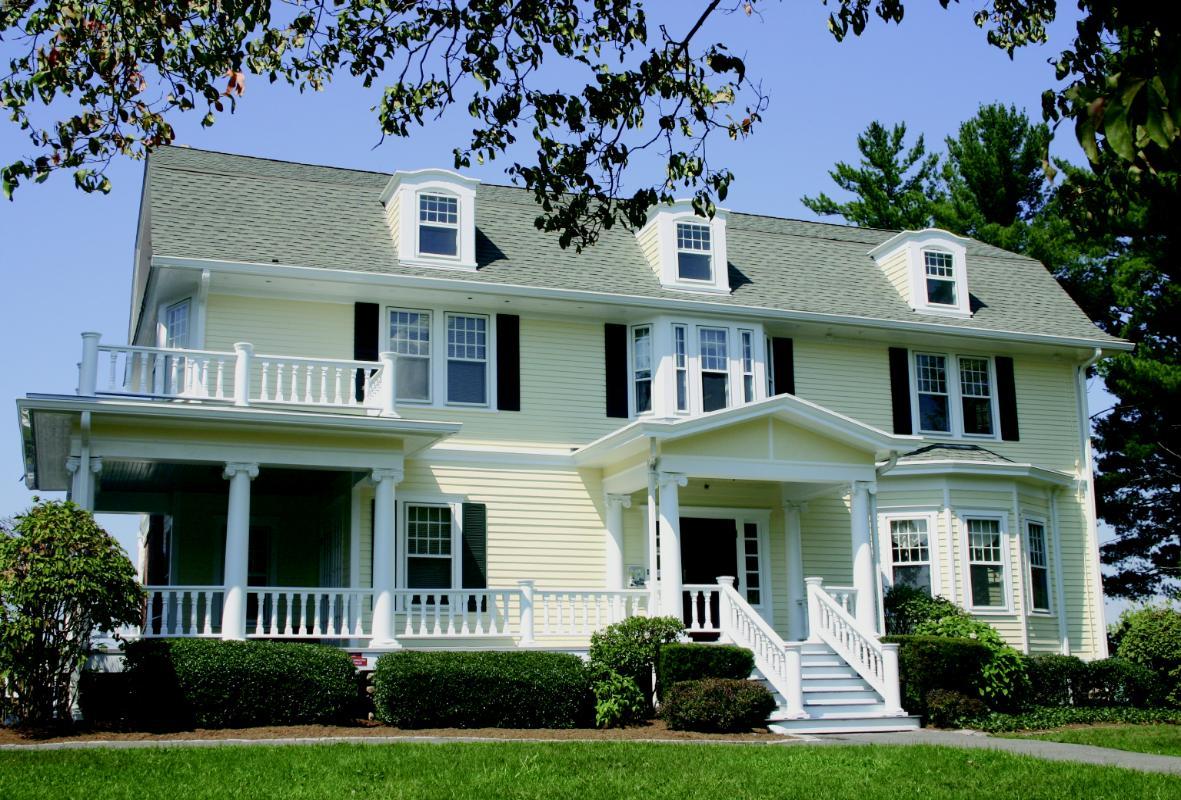
This historic building was built in 1911 as a home for the family of New Paltz native James Maclaury. The State University of New York purchased the building in 1984, and it was renovated for modern use thanks in large part to a generous gift from alumna Dorothea Hopfer, a member of the New Paltz Normal School Class of 1919. Today the Hopfer House serves as home to the University’s Admission staff – new visitors to campus are welcome to stop in for a cup of coffee and information about all things SUNY New Paltz.
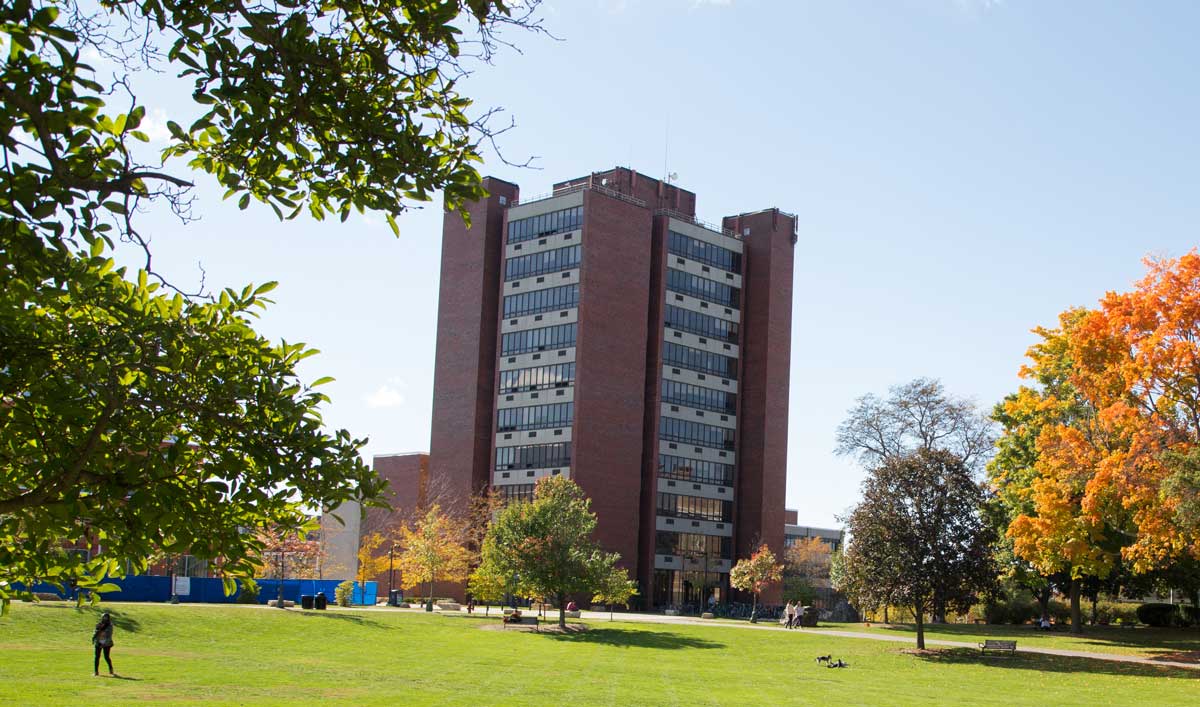
At approximately 120 feet, this tower is the tallest building on campus and among the tallest in the Hudson Valley, a landmark identifying campus for hikers looking east from the Shawangunk Mountain range. JFT was built in 1968 to serve as the home of departments and faculty offices for the College of Liberal Arts & Sciences, the largest single academic unit at SUNY New Paltz. It is named to honor John H. Jacobson, a former dean of the University who served as interim president during a crucial period during the late 1960s. Among Jacobson’s lasting legacies is his support of “Project A,” a precursor to what would become the University’s Educational Opportunity Program.

Housed inside the Coykendall Science Building, the campus planetarium is named for John R. Kirk, the University’s first planetarium director. Kirk was a faculty member in the Philosophy Department who dedicated countless hours to offering planetarium education to students of all ages from throughout the Mid-Hudson Valley.

Originally built in 1919 as the auditorium space for Old Main, Studley Theatre was renovated in 1992 thanks to a generous gift from its namesake. Julien J. Studley was a New York-based real estate broker who emigrated from his family’s home in Brussels to escape the beginning of World War II. He supported numerous philanthropic causes in higher education prior to his death in 2015. Studley Theatre seats up to 760 guests, and serves as a major gathering place hosting arts events, concerts and celebrations during the University’s May Commencement weekend.
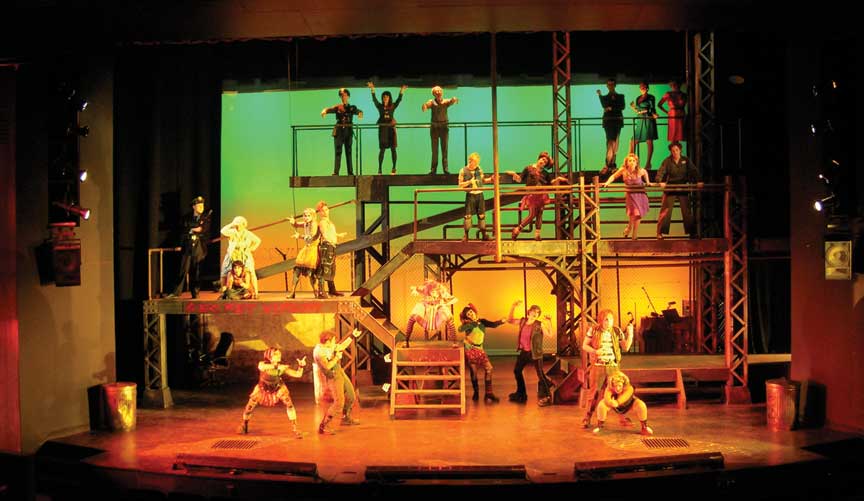
Housed inside the College Theatre building, which was built in 1963, McKenna Theatre lies at the heart of the College’s nationally accredited Department of Theatre Arts. The modern, 375-seat proscenium arch theatre hosts dramatic performances and celebratory events throughout the year. It is named for beloved professor of English and drama, Rebecca McKenna, who served at New Paltz from 1931-1952 and is remembered as the founder of New Paltz theatre programs as we know them today.
This unique facility was constructed in 2010 thanks to a generous bequest from astronomy enthusiasts, the Smolens, who made their home in nearby Hurley, N.Y. Jack Smolen was an amateur telescope creator who ground the mirror for his device on his kitchen table during his days in New York City, and opened his Eagle’s Nest Observatory to the public in 1963. Today, the Smolen Observatory houses a 14-inch Celestron Schmidt Reflecting telescope on a Paramount mount, two smaller 8-inch Dobsonian telescopes, and of course, Jack Smolen’s original 10-inch telescope.
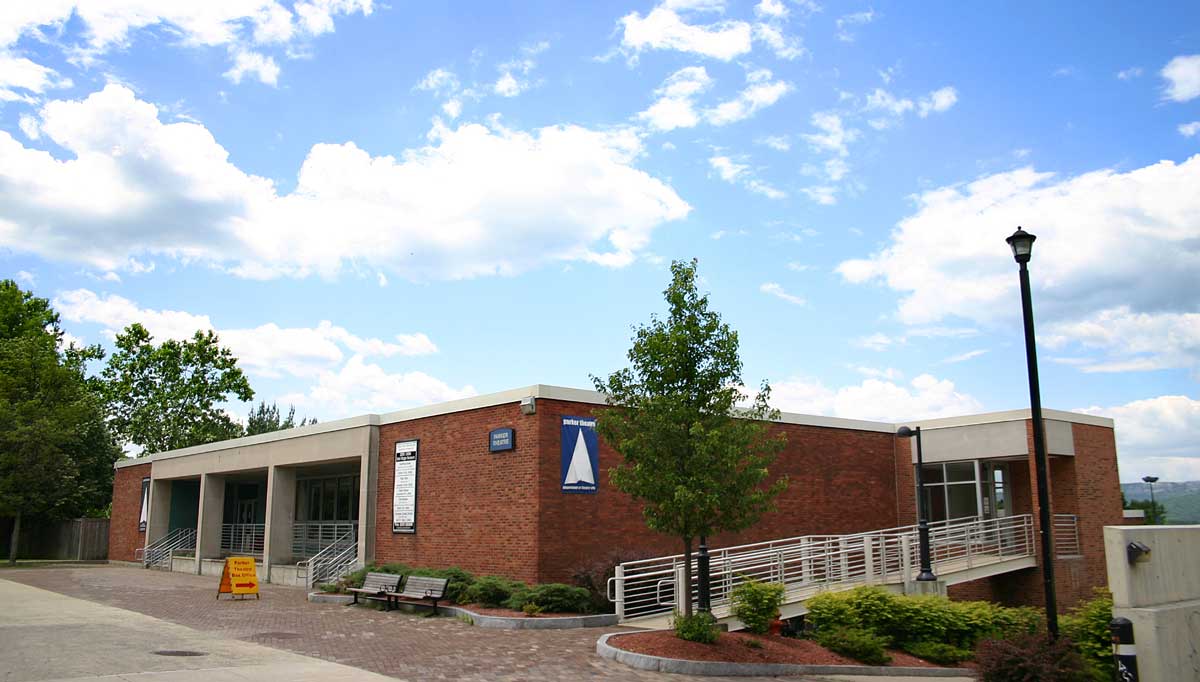
Originally built in 1962 to serve as a dining hall, Parker was converted to a theatre in 1972 and renovated in 1994 to support the University’s modern theatre arts curriculum. It features a modified thrust stage with seating for 212, with lighting and sound booths with computerized light board and digital audio equipment. Parker Theatre is also home to the only Starbucks store on the SUNY New Paltz campus. Parker Theatre, and the Parker Quadrangle in which it resides, are named in honor of Alton B. Parker, an Ulster County judge and a New Paltz Normal School board member. Fun fact: in 1904, Parker defeated publishing tycoon William Randolph Hearst for the Democratic Party nomination for that year’s U.S. presidential election, which Parker then lost to incumbent Theodore “Teddy” Roosevelt.
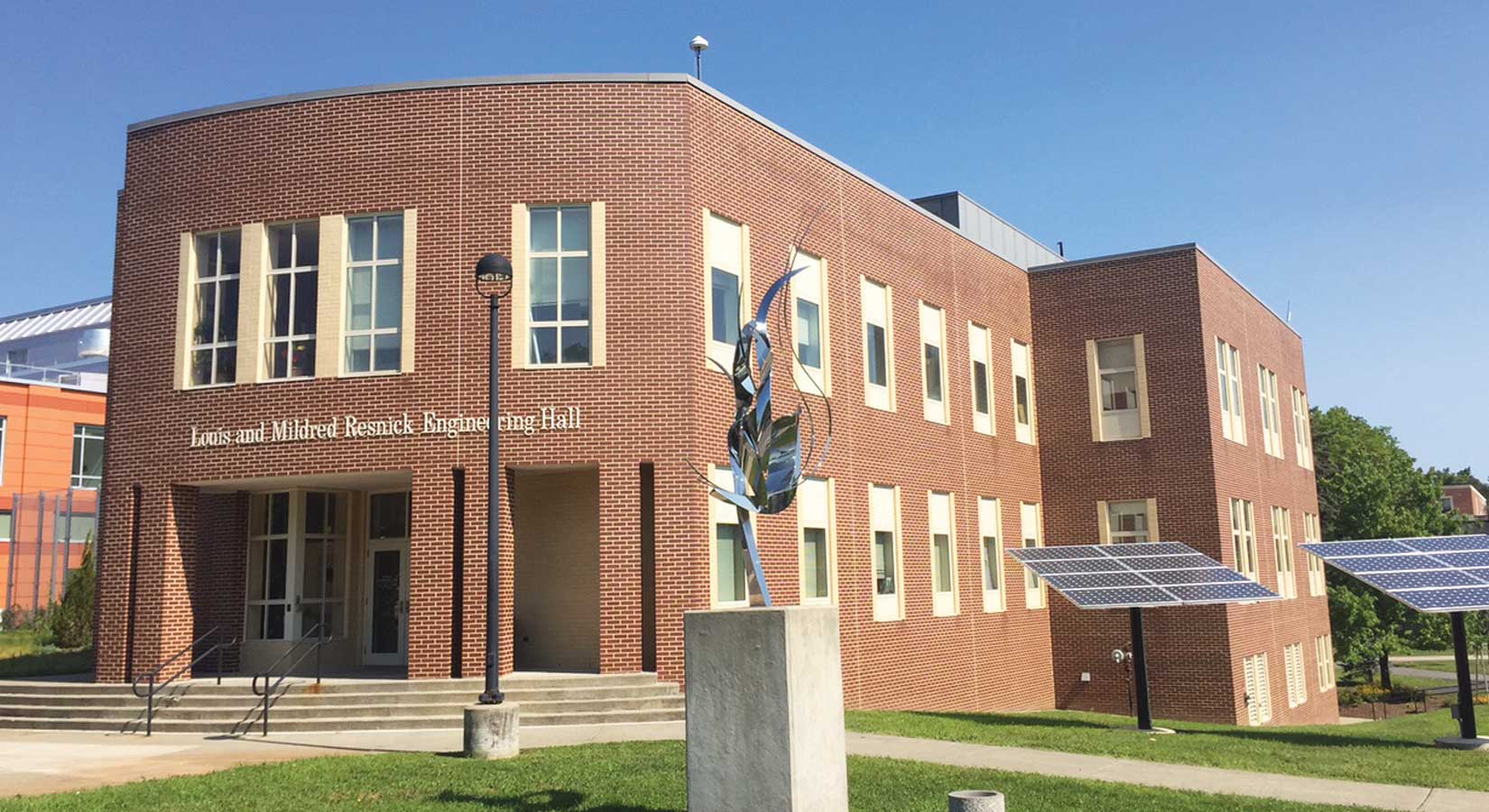
Home to the Division of Engineering Programs since its construction in 1998, the Resnick Engineering Hall houses a center for high-powered computation, numerous engineering laboratories and the late Governor Mario Cuomo Colloquium Room. It is named in honor of Louis and Mildred Resnick, the Ellenville, N.Y., philanthropists whose generosity has impacted people and organizations throughout the Hudson Valley. The Resnicks owned Channel Master, a highly successful television antenna business, in Ellenville. At SUNY New Paltz, the Resnicks supported engineering programs in their early days, and created multiple scholarships that have helped hundreds of students attain their educational goals.
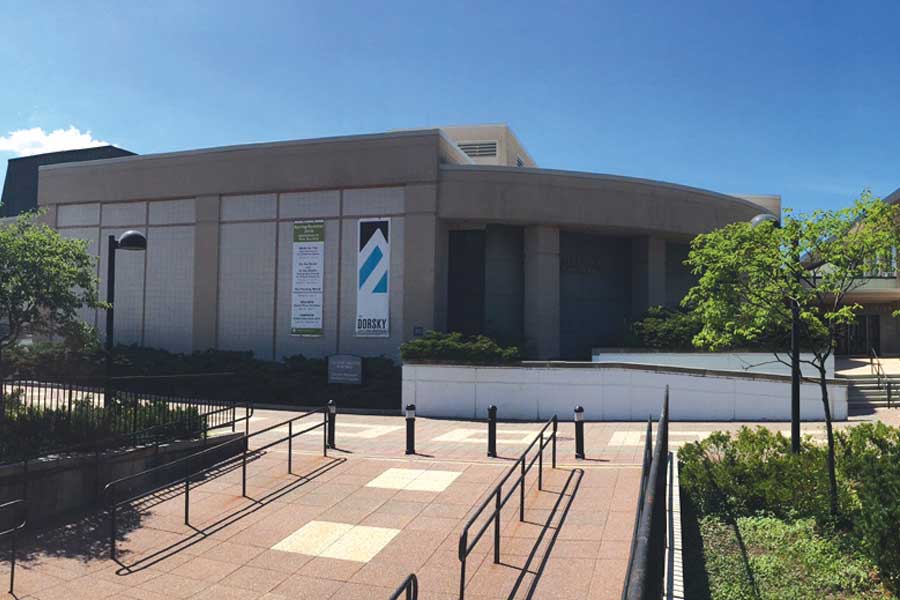
The Hudson Valley’s premier collegiate museum of art opened at SUNY New Paltz in 2001, with more than 9,000 sq. ft. of exhibition and instructional space. The museum is named for Samuel Dorsky, an esteemed friend of the University and renowned philanthropist and patron of the arts. The Dorsky family continues to be a major supporter of The Dorsky Museum and SUNY New Paltz, with members serving on the Advisory Board of The Dorsky Museum and as directors of the SUNY New Paltz Foundation.
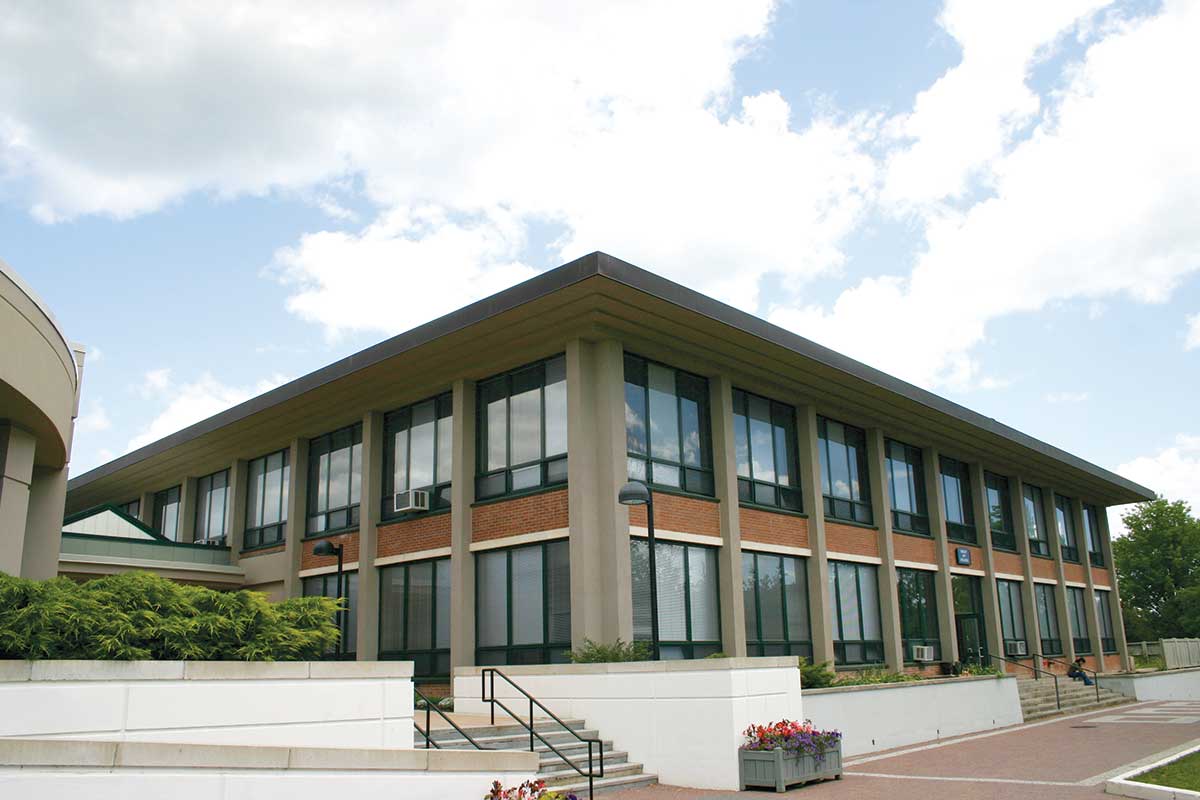
Smiley has been a home for art studios, faculty offices, and programs in art history and art education since 1963. It is currently also the site of the Hudson Valley Advanced Manufacturing Center, which is equipped with state of the art 3D printers and other digital design & fabrication tools. The building was named in honor of the Smiley family, whose lasting contributions to the New Paltz region include the construction of the historic Mohonk Mountain House resort, and sustained support of SUNY New Paltz, which extends back to its days as the New Paltz Normal School.
The College’s library was constructed in 1969 and named to commemorate the life of Sojourner Truth, a former slave born in Ulster County who escaped her bondage and spent her life advocating for both civil and women’s rights. Among Truth’s many revolutionary accomplishments, in 1828 she became the first black woman to win a legal case against a white male slaveholder, successfully suing to free her son, who had been illegally sold into slavery in the South after emancipation became law in New York State.
The three-story library at New Paltz that bears Truth’s name was renovated in 2016 to serve a new generation of scholars and educators, offering group meeting spaces, dozens of computer work stations, a convenient café and plenty of comfy reading chairs, in addition to a large and sophisticated collection of print and digital publications across a wide range of academic disciplines.
This fully licensed, nationally accredited child care facility was constructed in 2001 to provide childcare services for members of the campus community and the surrounding area. It is named for the late Charles Cook, who served in the New York State Senate for nearly three decades. Senator Cook secured the legislative appropriation to support child care centers at SUNY New Paltz and other state facilities. He is remembered for his work in health care, education and reproductive choice.
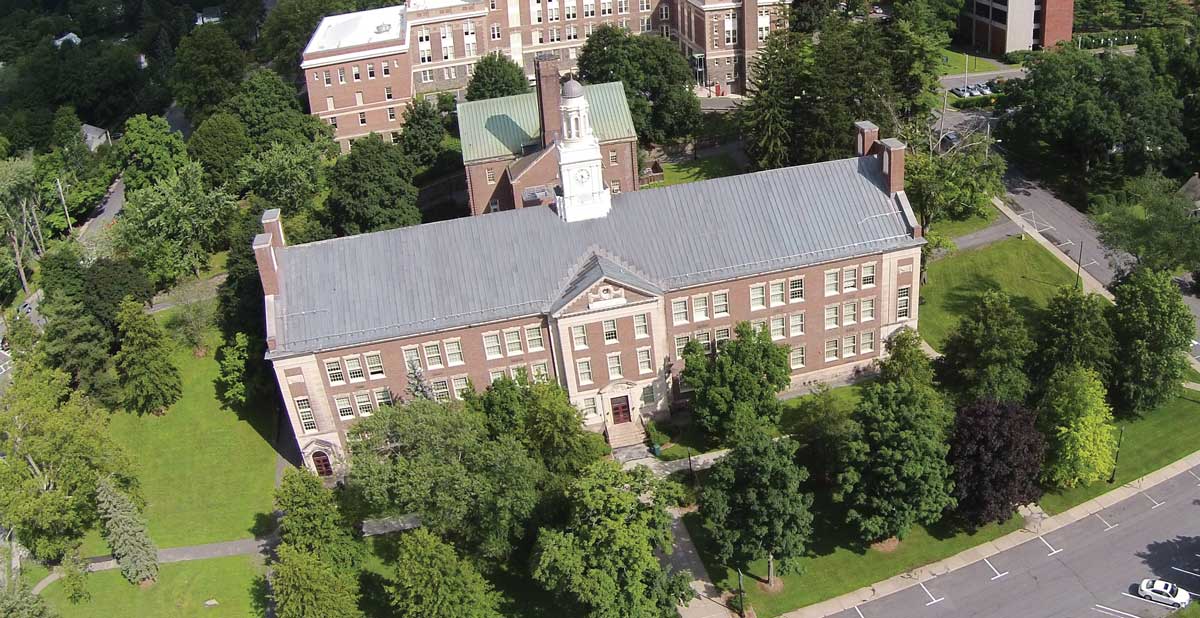
The University’s clock tower sits atop this historic building, originally built in 1930 as the Campus Practice School and later the van den Berg Learning Center, where numerous local school children spent their formative years under the tutelage of college professors and teachers-in-training at the University. The original wood tower was destroyed by fire in 1990 and was replaced with a new aluminum clock tower as part of a 2005 renovation. Each day at noon the carillon inside the clock tower plays the University’s alma mater, “In a Valley Fair.” Van den Berg Hall now serves as home to the AASCB-accredited School of Business at SUNY New Paltz. The building is named for Lawrence H. van den Berg, who led the New Paltz Normal School as its principal from 1923-1943 and became the first president of the College at New Paltz following the transition.
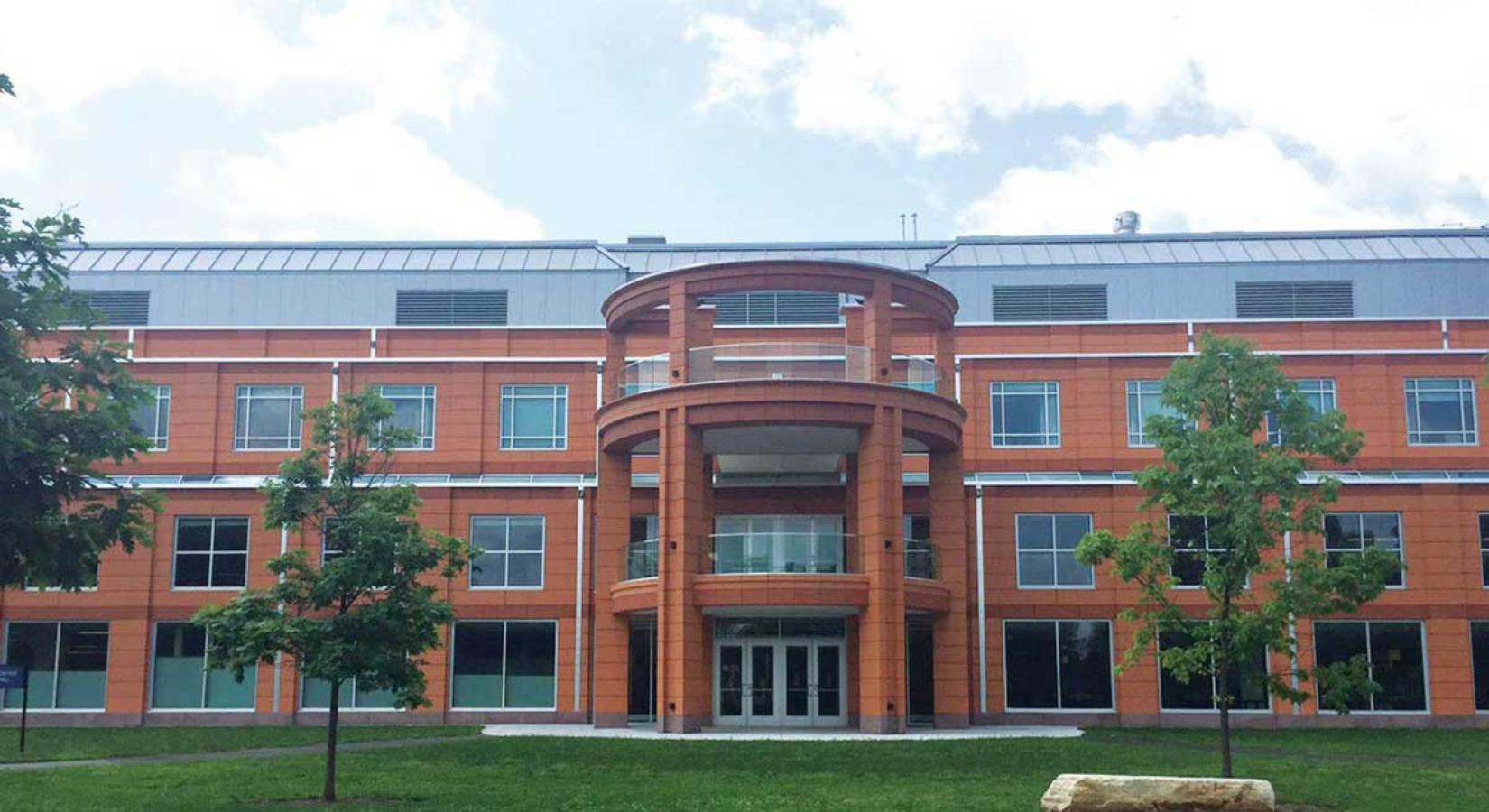
Wooster Science Building was constructed in 1968 and was thoroughly transformed (and renamed Wooster Hall) during a renovation completed in 2016. The building now serves as a central hub of student activity on campus, housing the Departments of Psychology and Anthropology, numerous science and engineering labs, a café named Element 93 (after the 93rd element on the periodic table, Neptunium, whose symbol is Np), and student services offices including Financial Aid, Student Accounts, Records & Registration and Academic Advising. The building is named in honor of Charles B. Wooster, a beloved professor of Chemistry who served at the University for many years.
Athletic Buildings & Fields

This facility was built in 1964 and served as the primary indoor athletic center on campus until the 2006 opening of the Athletic & Wellness Center. Today, Elting Gymnasium features an indoor court for intramural use, four racquetball courts, a dance studio, locker rooms, and Elting Pool, a 6-lane, 25-yard swimming pool with a Colorado Timing system that is used for all home swim meets.
The facility is named after the Elting family who had served on the New Paltz Normal School Board of Visitors. The Normal School was a precursor to SUNY New Paltz from 1885 to 1942.
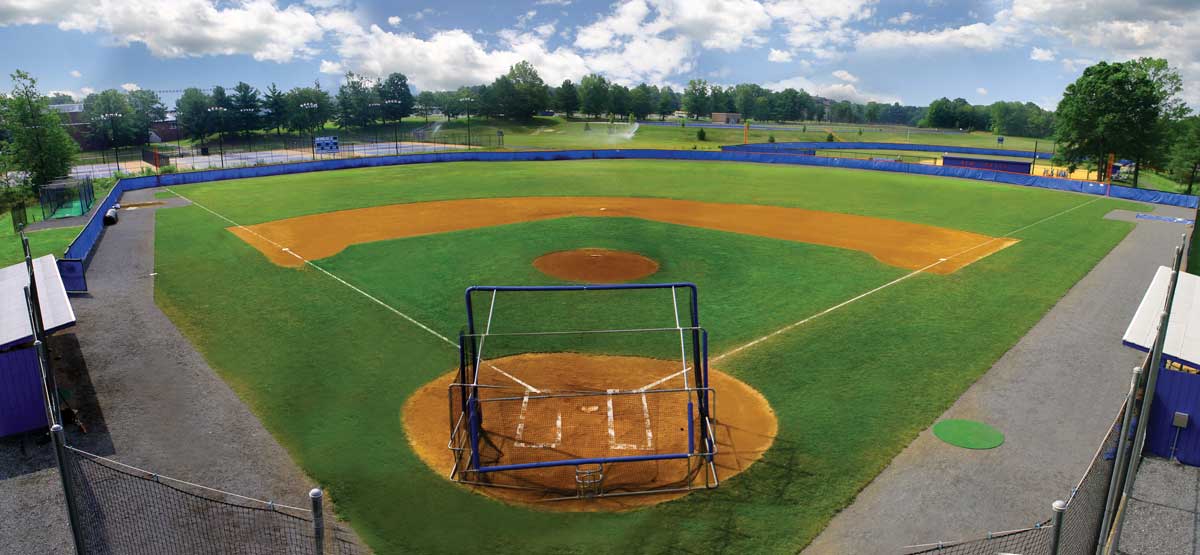
This complete, Division III, baseball-only complex has served the SUNY New Paltz baseball team for more than 50 years. In 1982 it was dedicated in honor of Loren Campbell, a mythic figure in the history of New Paltz athletics who coached various sports during a career that spanned from 1932-1968. The field was renovated with new surfaces, bullpens and a modern scoreboard in 2012.

This complete, Division III softball-only facility was renovated in 2011 with a natural grass outfield, surrounded by a blue windscreen, and a dirt infield. The facility also offers a double-wide hitting cage, double-wide bullpen, state-of-the-art scoreboard and bleacher seating for more than 100 spectators. The field is named for New Paltz Athletics Hall of Famer Mary Gray Deane, who served as director of athletics and coach from 1924-1959.
Residence Halls

One of the five residence halls in the Peregrine Complex, Ashokan Hall was constructed in 1968 and renovated in 2011. It houses about 208 students. Like the other halls in the complex, Ashokan units are arranged in a suite style, with each suite consisting of two to four double occupancy bedrooms, a small lounge area and a bathroom.
Ashokan Hall shares a name with the Ashokan Center, a conference and retreat center in the Catskill Mountains, which was formerly part of SUNY New Paltz then known as the Ashokan Field Campus.
Ashokan is also the name of the nearby reservoir, a major water supply for New York City and the Village of New Paltz. The word “Ashokan” is believed to derive from an Iroquois word and is often translated as “place of many fishes.”
From 1968-2019, the building was named Crispell Hall after Antoine Crispell, an original patentee of New Paltz who settled in this region along with other original Huguenot patentees during the 17th century.
Early generations of the Crispell family, including Antoine Crispell, owned enslaved Africans prior to the 1828 emancipation in New York State. During the Civil War, many Crispell family members fought with the Union Army, including Abraham Eltinge Crispell, who served as Brigade Surgeon of Volunteers beginning in 1862.
Subsequent generations of the Crispell family demonstrated strong commitment to education and contributed to founding, governing and supporting the schools that would eventually become SUNY New Paltz.
The SUNY New Paltz Council and the SUNY Board of Trustees voted to change the name of this and five other buildings in the Peregrine Complex in 2019, following nearly two years of research and inclusive dialogue initiated by then-President Donald P. Christian and led by the Diversity & Inclusion Council.
The process involved a broad constituency of students, faculty, staff, alumni, the SUNY New Paltz Council, campus leadership, and community stakeholders, including Huguenot descendants and Historic Huguenot Street leadership.
The Diversity & Inclusion Council ultimately recommended that changing the building names would position the University to better serve the needs of an increasingly diverse student population. President Christian supported this recommendation and advocated strongly for its approval by the College Council and Board of Trustees.
Click here to read more about the building renaming process.
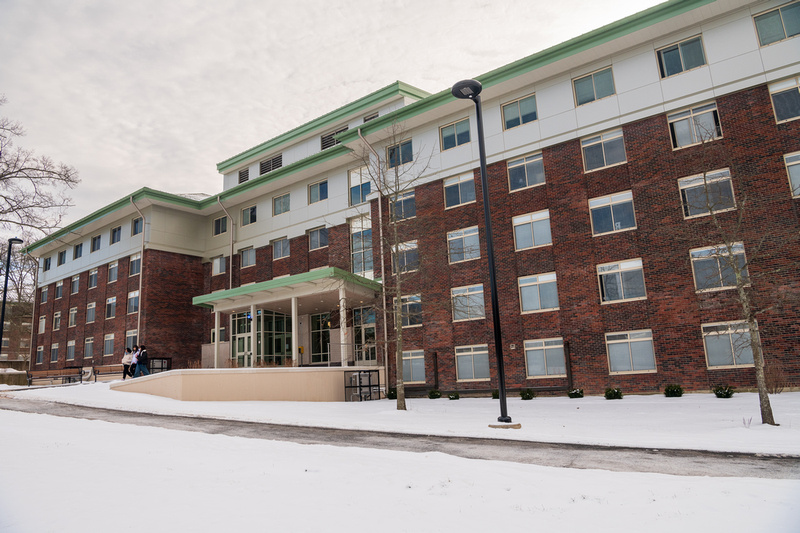
One of the five residence halls in the Peregrine Complex, Awosting Hall was constructed in 1968 and now houses about 280 students, following a renovation that was completed in 2023. Like the other halls in the complex, Awosting units are arranged in a suite-style, with each suite consisting of two to four double occupancy bedrooms, a small lounge area and a bathroom.
Awosting Hall is named after Lake Awosting, one of the “sky lakes” on the Shawangunk Ridge overlooking New Paltz. The word “Awosting” is adapted from the Native American (Munsee) word “aiaskawosting,” which referred to a region to the west of present-day New Paltz that was characterized by high, grassy hills.
From 1968-2019, the building was named Deyo Hall after Christian and Pierre Deyo, original patentees of New Paltz who settled in this region along with other original Huguenot patentees during the 17th century.
Early generations of the Deyo family, including Christian and Pierre Deyo, owned enslaved Africans prior to the 1828 emancipation in New York State. During the Civil War, many Deyo family members fought with the Union Army, including Andrew LeFevre Deyo, who was deployed to Louisiana during his service.
Subsequent generations of the Deyo family demonstrated strong commitment to education and contributed to founding, governing and supporting the schools that would eventually become SUNY New Paltz
The SUNY New Paltz Council and the SUNY Board of Trustees voted to change the name of this and five other buildings in the Peregrine Complex in 2019, following nearly two years of research and inclusive dialogue initiated by then-President Donald P. Christian and led by the Diversity & Inclusion Council.
The process involved a broad constituency of students, faculty, staff, alumni, the SUNY New Paltz Council, campus leadership, and community stakeholders, including Huguenot descendants and Historic Huguenot Street leadership.
The Diversity & Inclusion Council ultimately recommended that changing the building names would position the University to better serve the needs of an increasingly diverse student population. President Christian supported this recommendation and advocated strongly for its approval by the College Council and Board of Trustees.
Click here to read more about the building renaming process.
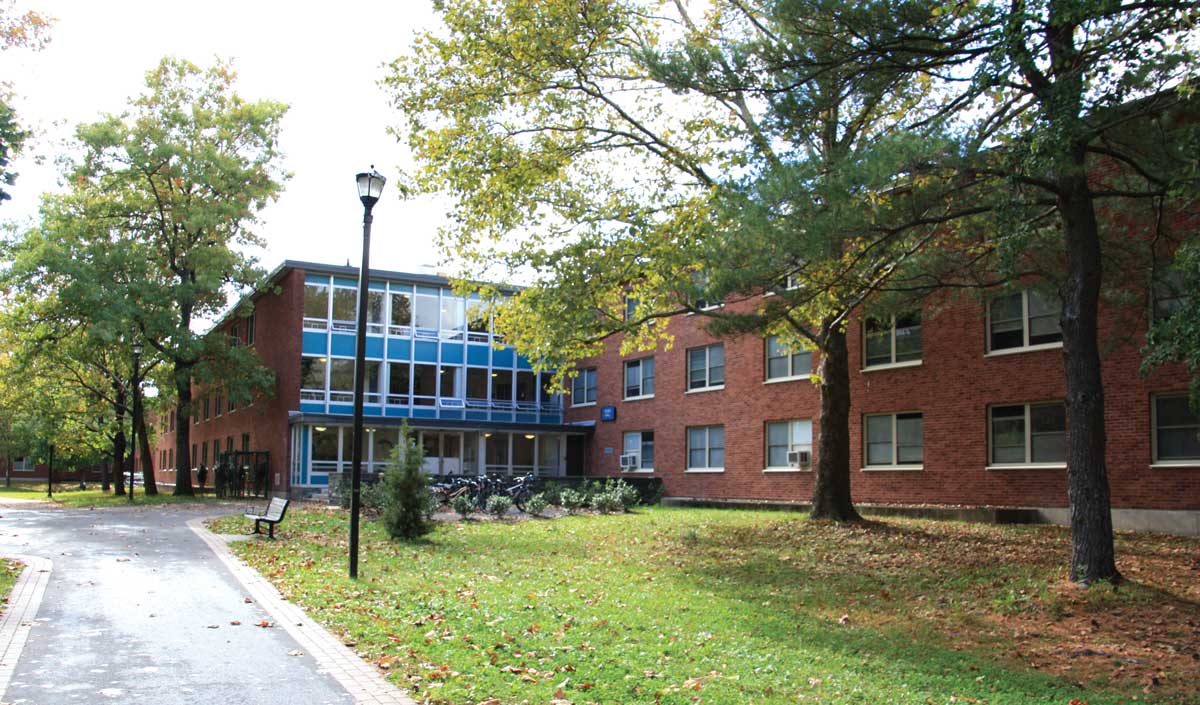
Bliss Hall was constructed in 1962 and offers living spaces for nearly 200 residential students. Like its fellow Parker Complex halls, Bliss is designed in a traditional corridor-style layout featuring lounges, a laundry room, study areas, a computer room and a recycling facility. The hall is named for John Carlton Bliss, the fourth principal of New Paltz Normal School, who served from 1908-1923.
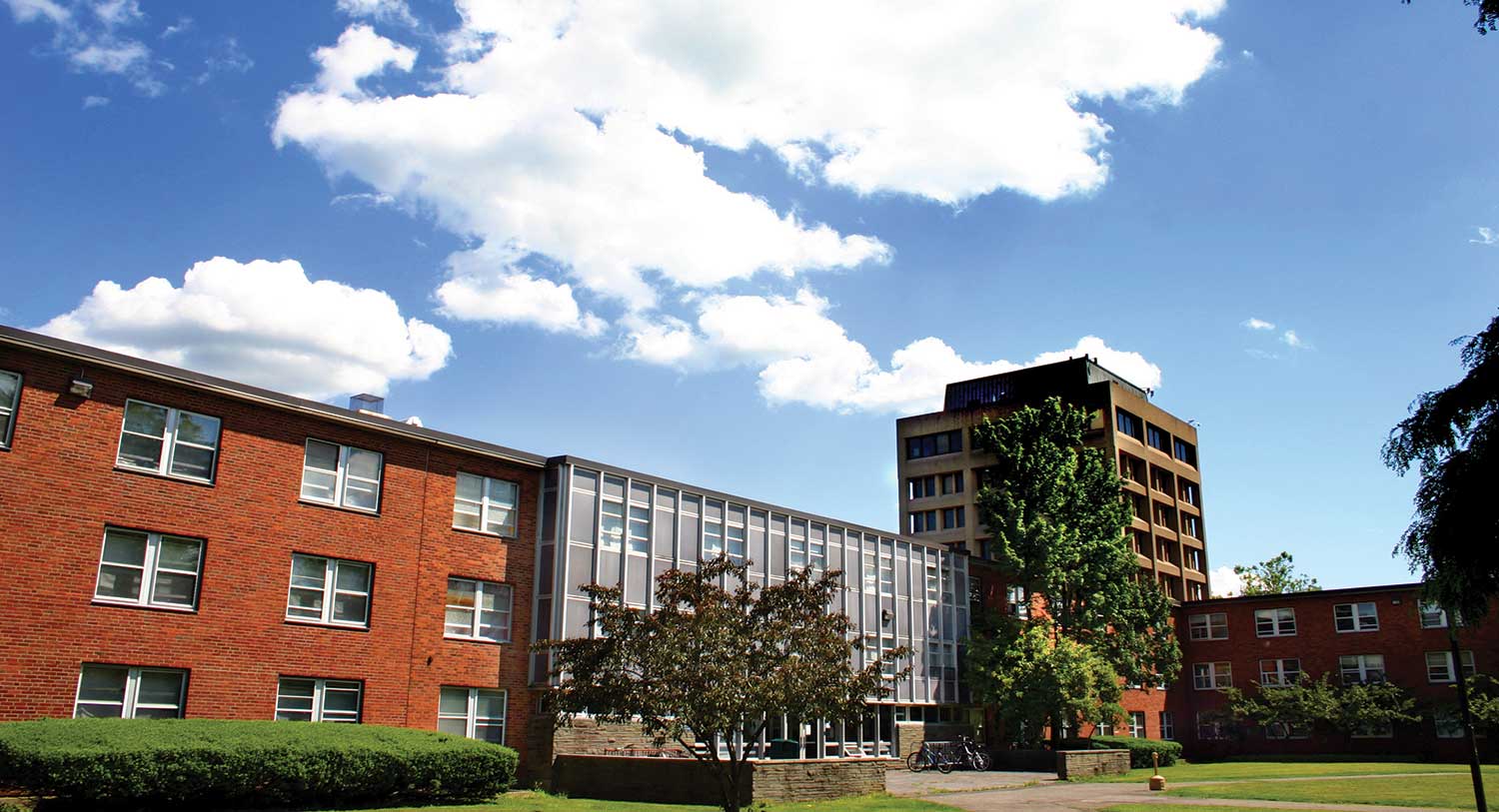
Bouton Hall is among the most historic residence halls on campus, having been constructed in 1958 and with a capacity of approximately 280 students. Bouton is designed in a traditional corridor-style layout featuring lounges, a laundry room, study areas, a computer room and a recycling facility. It is named for the very first principal of the New Paltz Normal School, Eugene Bouton, who served during the formative years of 1886-88 and passed away in 1951 at the age of 100.
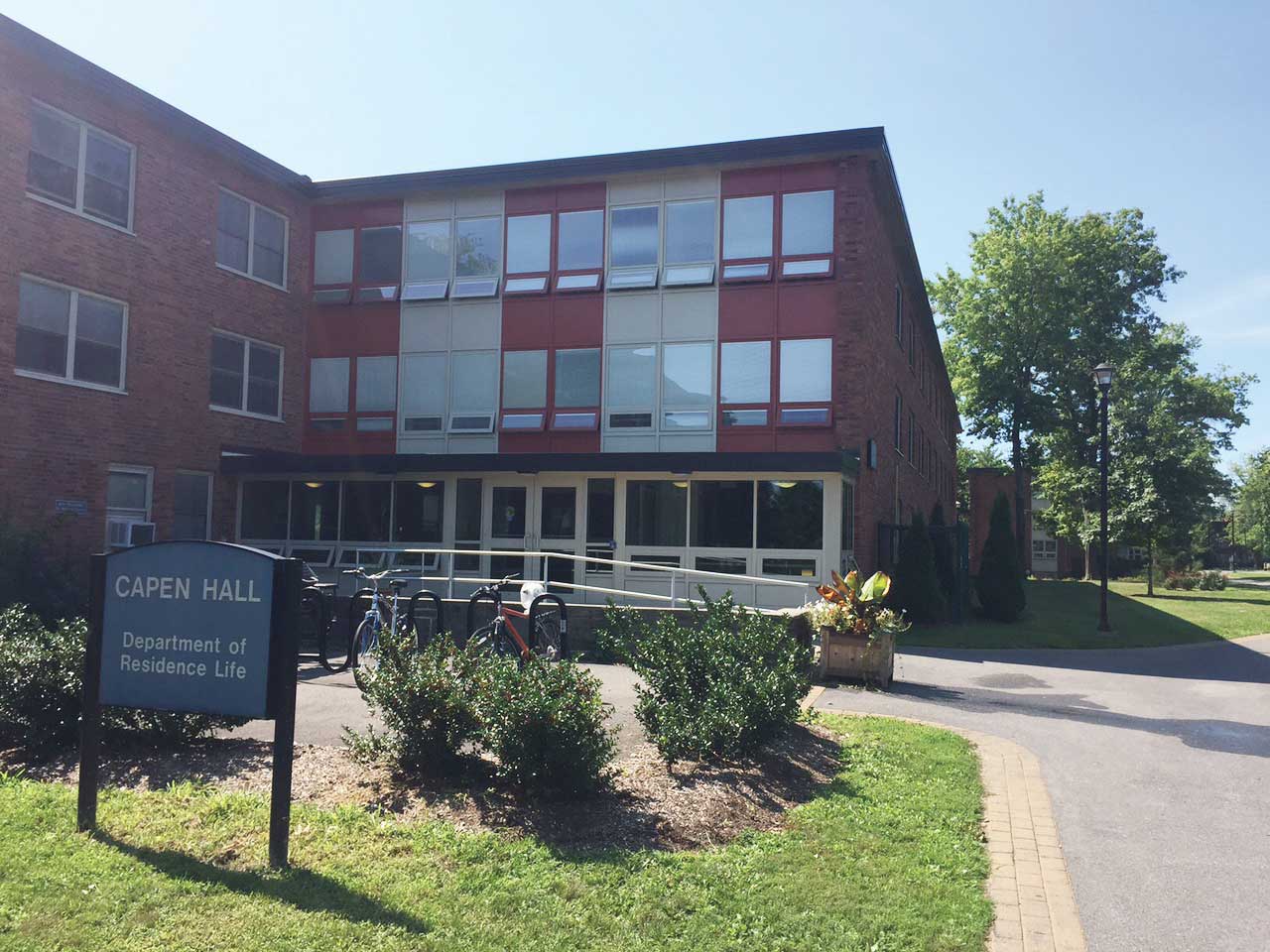
Capen Hall was constructed in 1958 and offers living spaces for about 190 residential students. Like its fellow Parker Complex halls, Capen is designed in a traditional corridor-style layout featuring lounges, a laundry room, study areas, a computer room and a recycling facility. The hall is named for Frank S. Capen, the second principal of New Paltz Normal School (1888-1899).

Constructed in 2001 on the south side of campus to support a growing resident student population, Esopus Hall houses 235 students (primarily first-year students) in a traditional corridor-style layout. The facility is named in honor of the Esopus tribe of the Lenape nation, whose lands included modern-day Ulster and Sullivan counties.
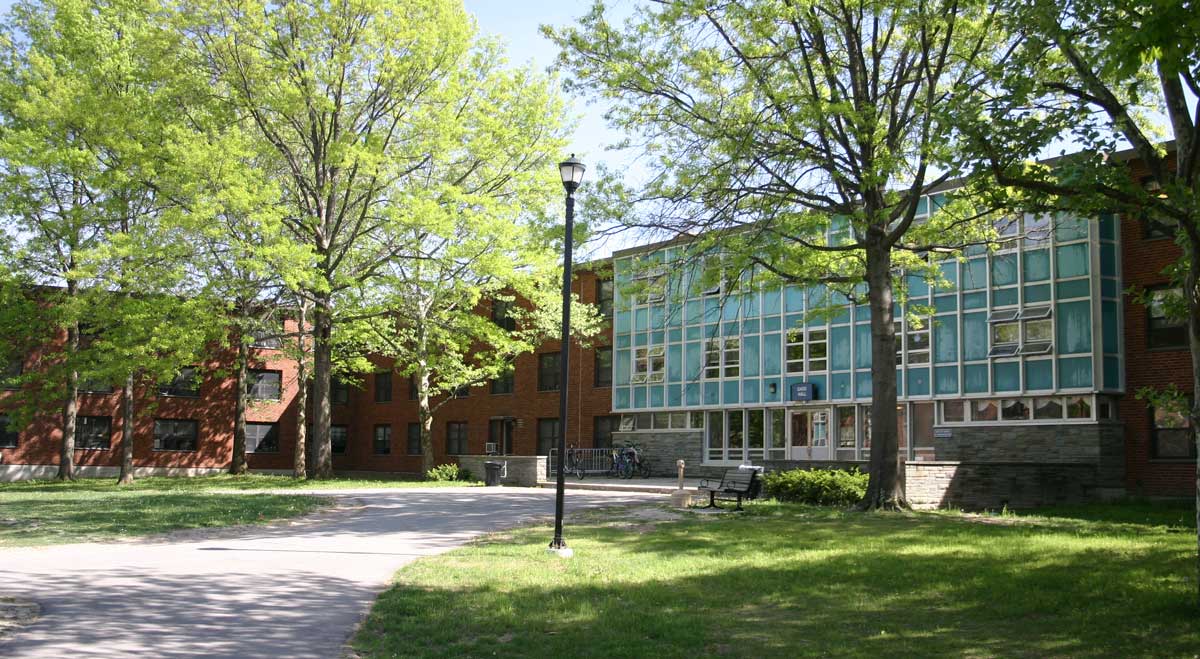
Gage Hall was constructed in 1963 and offers living spaces for more than 280 residential students, making it the largest residence hall on campus. Like its fellow Parker Complex halls, Gage is designed in a traditional corridor-style layout featuring lounges, a laundry room, study areas, a computer room and a recycling facility. The hall is named for Kitty Augusta Gage, a pioneer in the history of women in American education, who taught classical and modern languages at New Paltz Normal School from 1886-1913.
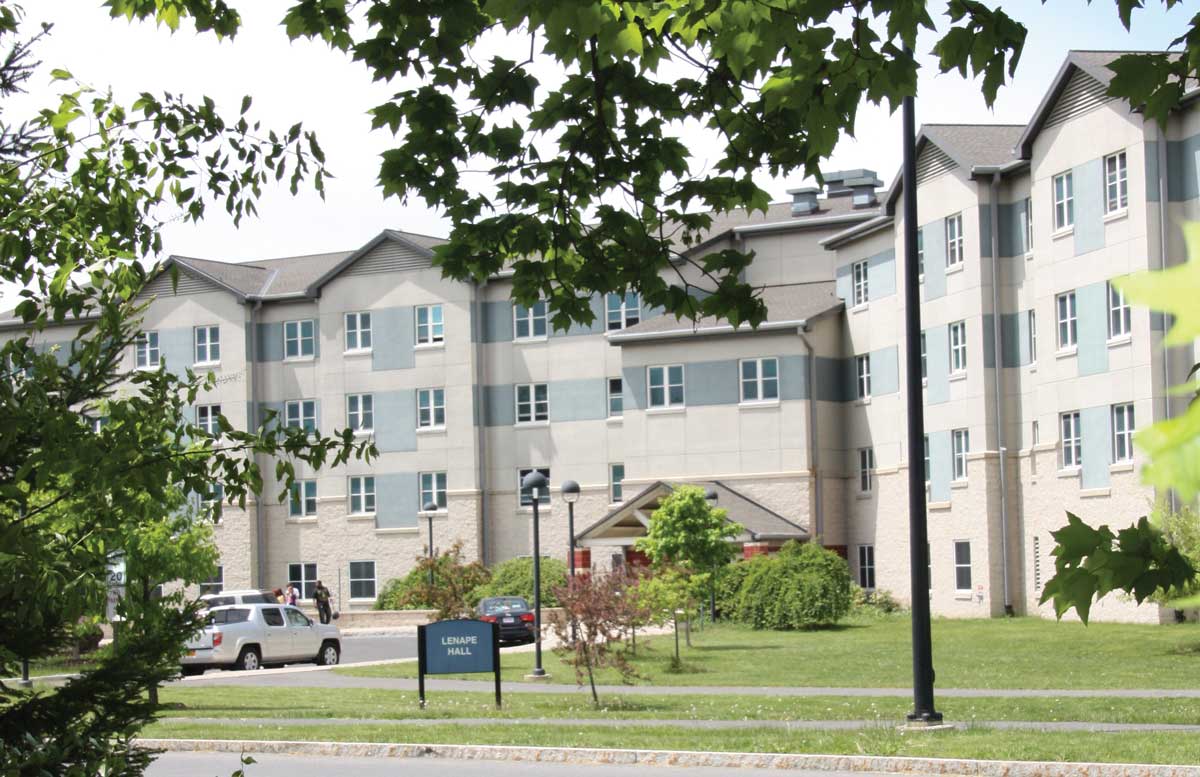
As one of the three newest residence halls constructed on the south side of campus, Lenape Hall, built in 2004, houses 238 students in three-person rooms that all include their own private bathroom. Many first-year programs, including the Honors Program, have specially designated living areas within Lenape. The building is named in honor of the Lenape, a powerful Native American nation whose lands extended from the Hudson Valley south into modern-day Delaware.
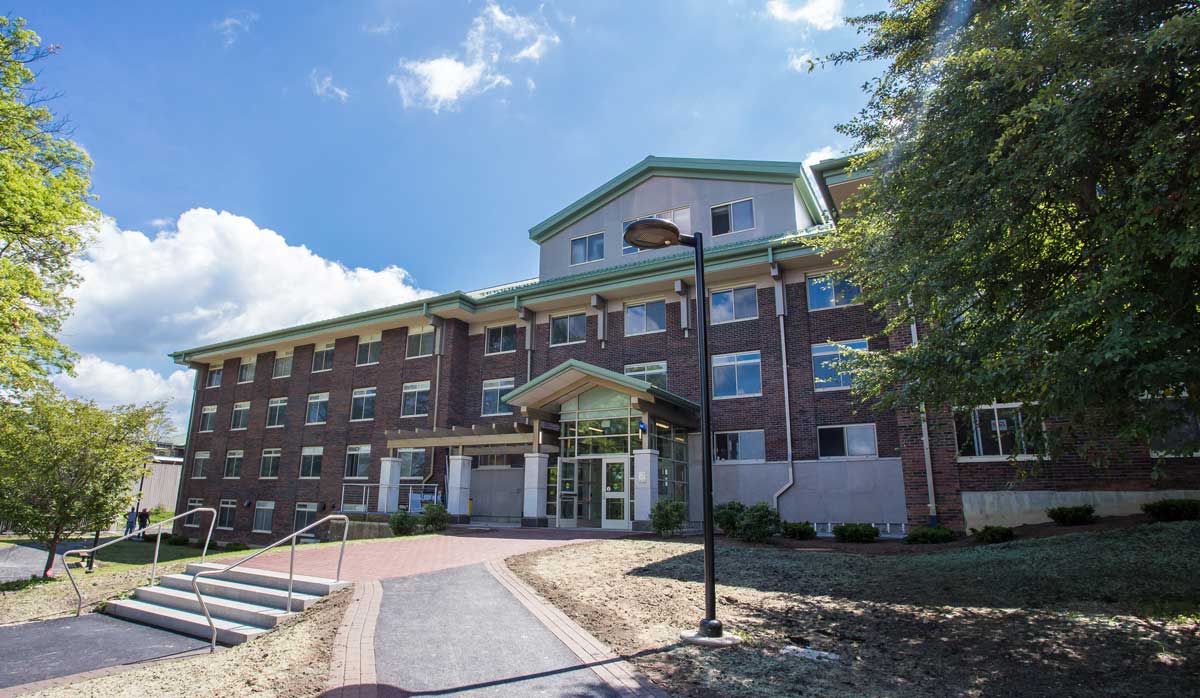
One of the five residence halls in the Peregrine Complex, Minnewaska Hall was constructed in 1968 and renovated in 2018. It houses about 208 students. Like the other halls in the complex, Minnewaska Hall rooms are arranged in a suite style, with each suite consisting of two to four double occupancy bedrooms, a small lounge area and a bathroom.
Minnewaska Hall is named for Lake Minnewaska, one of the “sky lakes” on the Shawangunk Ridge overlooking New Paltz. The lake was named in 1875 by Alfred H. Smiley, one of the founders of the Mohonk Mountain House resort. The word is believed to derive from two words, “mini” or “mine,” meaning “water,” and “waste,” meaning “good,” from the language of the Dakota (Sioux) nation, which was not local to the Hudson Valley region.
From 1968-2019, the building was named Bevier Hall after Louis Bevier, an original patentee of New Paltz who settled in this region along with other original Huguenot patentees during the 17th century.
Early generations of the Bevier family, including Louis Bevier, owned enslaved Africans prior to the 1828 emancipation in New York State. During the Civil War, many Bevier family members fought with the Union Army, including Lewis Coe Bevier, who served in the 120th Volunteer Regiment, Company G, from 1862-1865.
Subsequent generations of the Bevier family demonstrated strong commitment to education and contributed to founding, governing and supporting the schools that would eventually become SUNY New Paltz.
The SUNY New Paltz Council and the SUNY Board of Trustees voted to change the name of this and five other buildings in the Peregrine Complex in 2019, following nearly two years of research and inclusive dialogue initiated by then-President Donald P. Christian and led by the Diversity & Inclusion Council.
The process involved a broad constituency of students, faculty, staff, alumni, the SUNY New Paltz Council, campus leadership, and community stakeholders, including Huguenot descendants and Historic Huguenot Street leadership.
The Diversity & Inclusion Council ultimately recommended that changing the building names would position the University to better serve the needs of an increasingly diverse student population. President Christian supported this recommendation and advocated strongly for its approval by the College Council and Board of Trustees.
Click here to read more about the building renaming process.
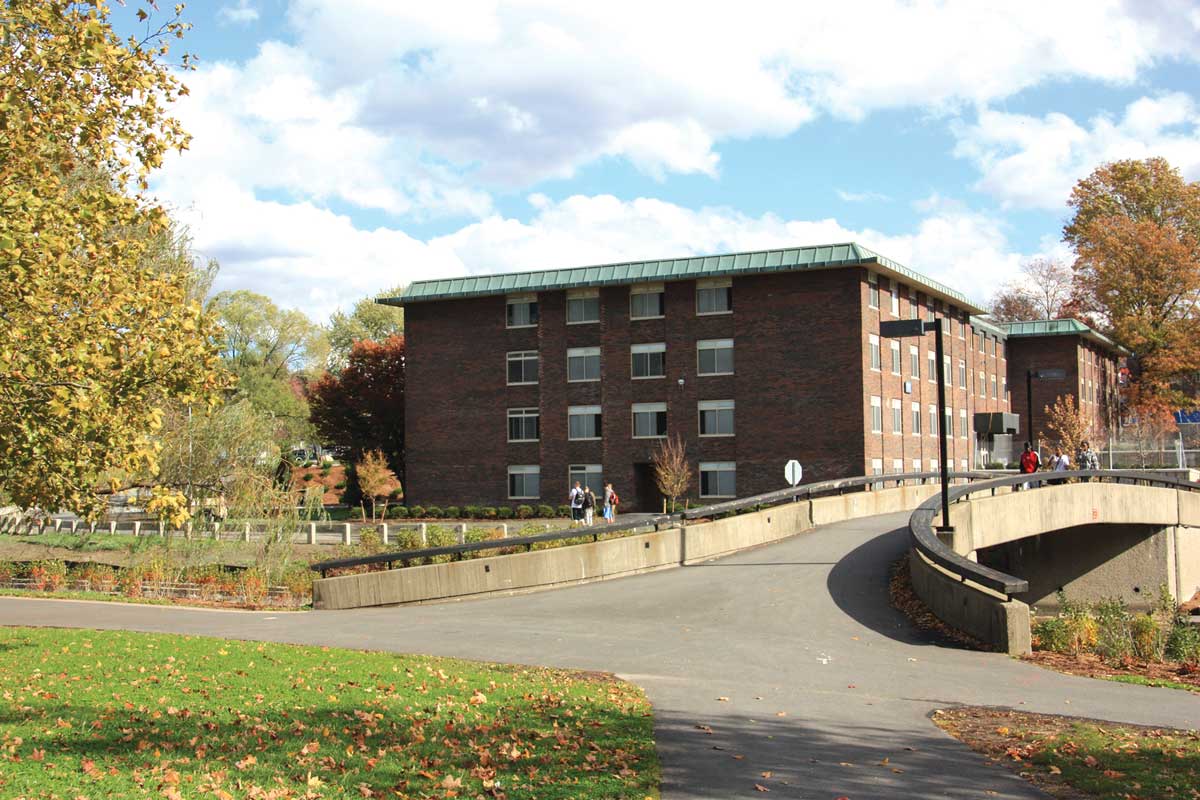
One of the five residence halls in the Peregrine Complex, Mohonk Hall was constructed in 1968 and houses about 208 students. Like the other halls in the complex, Mohonk rooms are arranged in a suite style, with each suite consisting of two to four double occupancy bedrooms, a small lounge area and a bathroom.
Mohonk Hall is named for Lake Mohonk, one of the “sky lakes” on the Shawangunk Ridge overlooking New Paltz. On the coast of Lake Mohonk sits Mohonk Mountain House, a 150-year-old resort owned and operated by the Smiley Family, with which SUNY New Paltz enjoys a strong and long-standing relationship.
The word “Mohonk” is believed to derive from the Delaware Indian word “Mogonck,” which was used for centuries to refer to the high hills overlooking present-day New Paltz.
From 1968-2019, the building was named DuBois Hall after Louis DuBois, an original patentee of New Paltz who settled in this region along with other original Huguenot patentees during the 17th century.
Early generations of the DuBois family, including Louis DuBois, owned enslaved Africans prior to the 1828 emancipation in New York State. W.E.B. Dubois, the American author, civil rights activist and founding director of the NAACP, traced his own lineage back to Louis DuBois.
Subsequent generations of the DuBois family demonstrated strong commitment to education and contributed to founding, governing and supporting the schools that would eventually become SUNY New Paltz.
The SUNY New Paltz Council and the SUNY Board of Trustees voted to change the name of this and five other buildings in the Peregrine Complex in 2019, following nearly two years of research and inclusive dialogue initiated by then-President Donald P. Christian and led by the Diversity & Inclusion Council.
The process involved a broad constituency of students, faculty, staff, alumni, the SUNY New Paltz Council, campus leadership, and community stakeholders, including Huguenot descendants and Historic Huguenot Street leadership.
The Diversity & Inclusion Council ultimately recommended that changing the building names would position the University to better serve the needs of an increasingly diverse student population. President Christian supported this recommendation and advocated strongly for its approval by the College Council and Board of Trustees.
Click here to read more about the building renaming process.
The largest dining facility on campus offers two stories of dining options, as well as a full-service bakery and a shared study/computer space. The all-you-can-eat cafeteria on the upper level serves as the primary dining option for most first-year students at SUNY New Paltz.
Peregrine (PER-i-grin) Dining Hall is named for the peregrine falcons that soar above the “sky lakes” situated along the Shawangunk Ridge overlooking New Paltz.
The peregrine falcon faced extinction in the Eastern U.S. in the mid-20th century, but was brought back from the brink thanks in large part to the work of SUNY New Paltz Biology Professor Heinz Meng (1924 – 2016). Meng was the first to successfully breed the falcon in captivity, pioneering techniques of a bird-release program that has restored its population levels and led to its removal from the Endangered Species List in 1999.
Symbolically, the name “Peregrine” has local significance as a symbol of resiliency and hope and can also represent wanderers from foreign lands. It stands as a reminder of the University’s core value of welcoming all who wish to live, learn and work here, regardless of their origins.
From 1964-2019, the building was named Hasbrouck Dining Hall after Abraham Hasbrouck, an original patentee of New Paltz who settled in this region along with other original Huguenot patentees during the 17thcentury.
Early generations of the Hasbrouck family, including Jean and Abraham Hasbrouck, owned enslaved Africans prior to the 1828 emancipation in New York State. Subsequent generations of the Hasbrouck family were part of the movement to abolish slavery and free enslaved persons.
In 1827, when Sojourner Truth, the abolitionist, women’s rights activist and namesake of the SUNY New Paltz Library, sued to free her son following his illegal sale into Southern slavery, she was represented in court by Abraham Bruyn Hasbrouck, who took the case pro bono.
A freedman named John Hasbrouck was one of the first African-Americans in New Paltz to own property, keep written records of his accounts, and vote in elections. John was born in 1806 to an enslaved woman owned by Jacob Hasbrouck. The identity of his father is unknown. When John was manumitted years later, he assumed the Hasbrouck family name.
Members of the Hasbrouck family demonstrated strong commitment to education and contributed to founding, governing and supporting the schools that would eventually become SUNY New Paltz.
The SUNY New Paltz Council and the SUNY Board of Trustees voted to change the name of this and five other buildings in the Peregrine Complex in 2019, following nearly two years of research and inclusive dialogue initiated by then-President Donald P. Christian and led by the Diversity & Inclusion Council.
The process involved a broad constituency of students, faculty, staff, alumni, the SUNY New Paltz Council, campus leadership, and community stakeholders, including Huguenot descendants and Historic Huguenot Street leadership.
The Diversity & Inclusion Council ultimately recommended that changing the building names would position the University to better serve the needs of an increasingly diverse student population. President Christian supported this recommendation and advocated strongly for its approval by the College Council and Board of Trustees.
Click here to read more about the building renaming process.
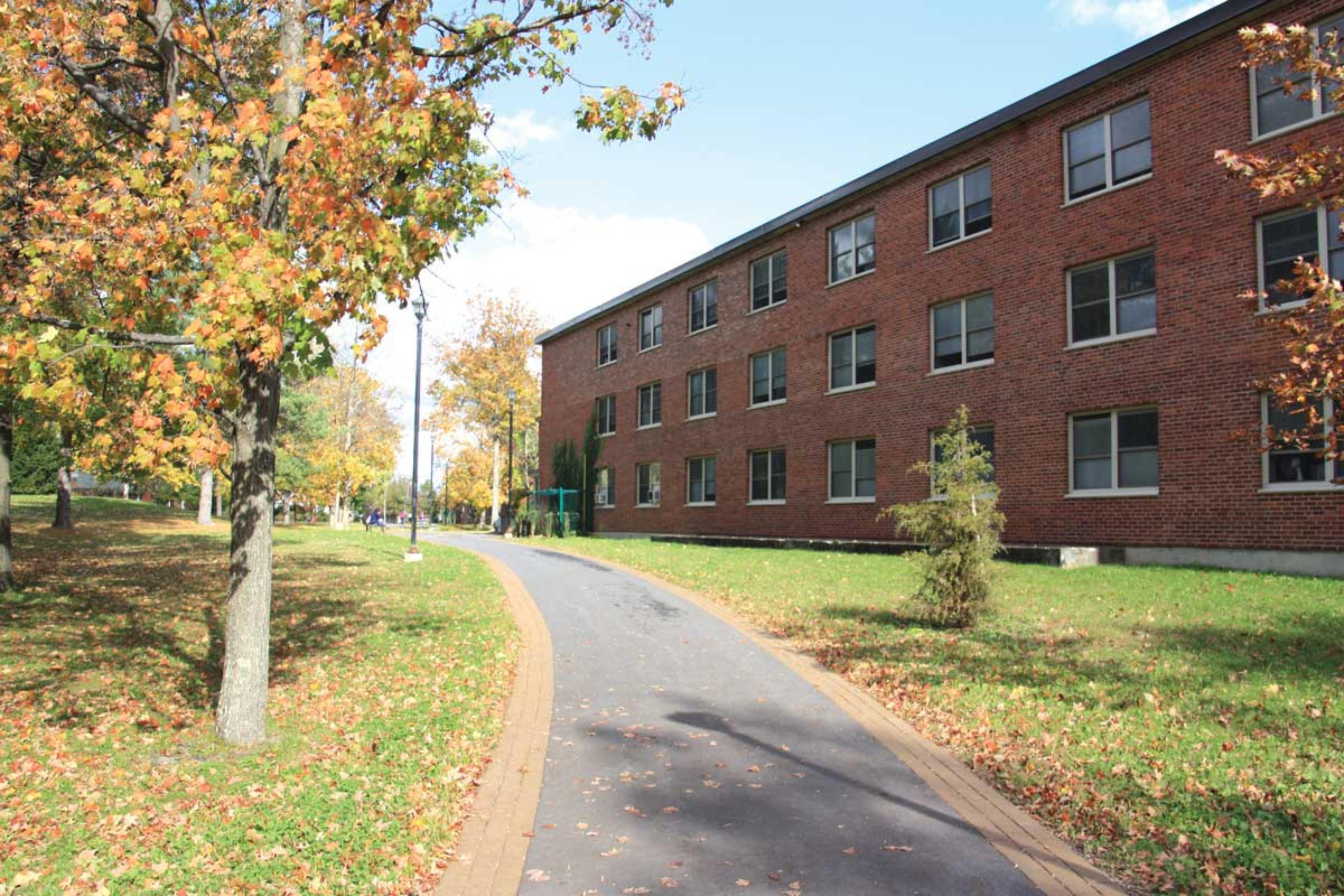
Scudder Hall was constructed in 1962 and offers living spaces for approximately 190 residential students. Like its fellow Parker Complex halls, Scudder is designed in a traditional corridor-style layout featuring lounges, a laundry room, study areas, a computer room and a recycling facility. The hall is named for Myron Tracy Scudder, the third principal of New Paltz Normal, who served from 1899-1908 and whose contributions include an initiative to host international students at New Paltz and the creation of an intercollegiate athletic program.
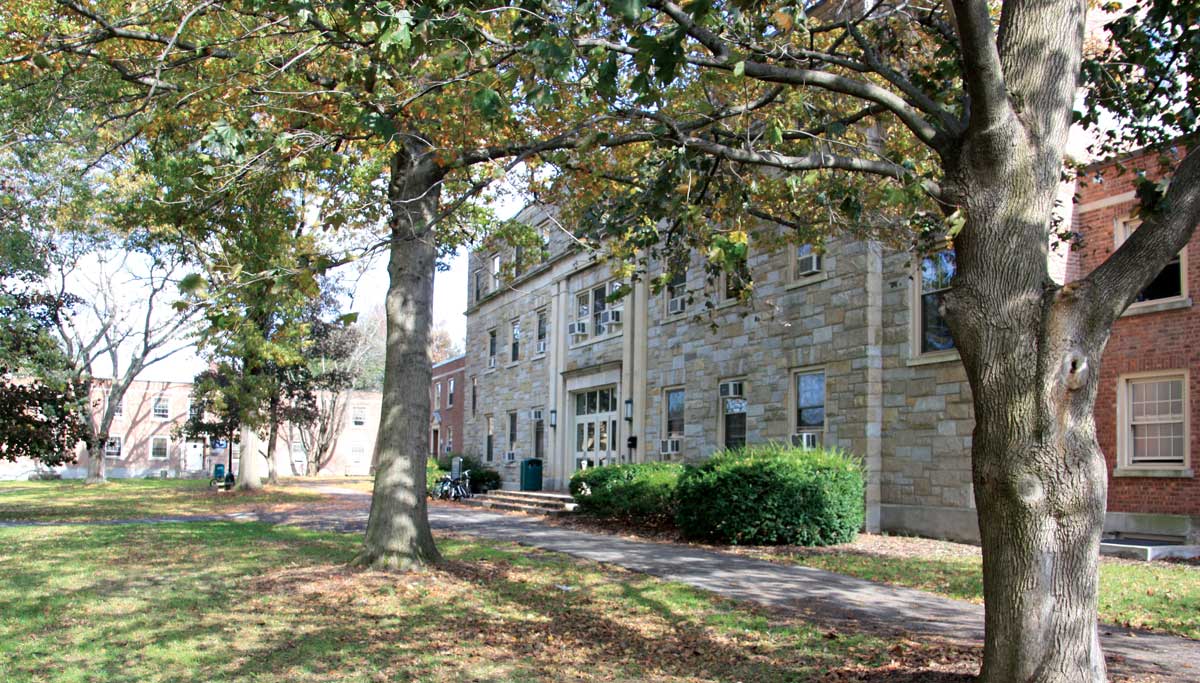
The first residence hall at SUNY New Paltz was built as the College Union in 1951. It then housed not only student dormitory rooms, but also a dining hall and other shared spaces. The residential wings of the building were originally named after six of the Huguenot families that founded New Paltz in the 17th century – Bevier, Crispell, Deyo, DuBois, Hasbrouck and Lefevre. Bronze plaques bearing those names remain on the building.
In the late 1960s, those Huguenot family names were transferred to the new residential complex of five residence halls and one dining hall along Route 32 known today as the Hasbrouck Quad. At the same time, members of the campus and surrounding community repurposed College Hall to serve as a living and learning residence, open to students of all races and ethnicities, with programming and art emphasizing the experiences and cultures of people of color, especially those of African descent. To mark the change, the building was renamed Shango Hall, in honor of the Yoruban god of thunder, a symbol of strength and perseverance.
Today, the Shango/College Hall Complex is a vital living and learning space on campus, the closest hall to the Village of New Paltz, and home to hundreds of student residents as well as the Honors Program, the Department of Music, the Scholar’s Mentorship Program and the Dr. Martin Luther King Jr. Educational Center.
.jpg)
One of the five residence halls in the Peregrine Complex, Shawangunk Hall was constructed in 1968 and renovated in 2015. It houses about 208 students. Like the other halls in the complex, Shawangunk rooms are arranged in a suite style, with each suite consisting of two to four double occupancy bedrooms, a small lounge area and a bathroom.
Shawangunk Hall is named for the iconic Shawangunk Ridge overlooking the Village of New Paltz, which is visible from multiple points on campus. Pronounced “sha-WAN-gunk,” the word is translated in the Brinton Lenape-English Dictionary (Unami dialect) as “southward.”
From 1968-2019, the building was named Lefevre Hall after Andries and Simon LeFevre, original patentees of New Paltz who settled in this region along with other original Huguenot patentees during the 17th century.
Early generations of the LeFevre family owned enslaved Africans prior to the 1828 emancipation in New York State. During the Civil War, many LeFevre family members fought with the Union Army, including Johannes LeFevre, who rose to the rank of Captain in the 156th regiment of the New York Volunteer Army before his death at the Battle of Cedar Creek.
Subsequent generations of the LeFevre family demonstrated strong commitment to education and contributed to founding, governing and supporting the schools that would eventually become SUNY New Paltz.
The SUNY New Paltz Council and the SUNY Board of Trustees voted to change the name of this and five other buildings in the Peregrine Complex in 2019, following nearly two years of research and inclusive dialogue initiated by then-President Donald P. Christian and led by the Diversity & Inclusion Council.
The process involved a broad constituency of students, faculty, staff, alumni, the SUNY New Paltz Council, campus leadership, and community stakeholders, including Huguenot descendants and Historic Huguenot Street leadership.
The Diversity & Inclusion Council ultimately recommended that changing the building names would position the University to better serve the needs of an increasingly diverse student population. President Christian supported this recommendation and advocated strongly for its approval by the College Council and Board of Trustees.
Click here to read more about the building renaming process.







